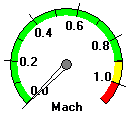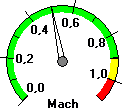 Prologue
PrologueIn 1938 it was very evident that a war in Europe was inevitable.
The U.S. Navy realized that its carrier-based fighter aircraft was inferior in quality to that of the land-based Army equivalents.
That year three fighter projects were started by the Navy Department to remedy this inadequacy.
Bell Aircraft proposed a carrier version of the P-39 and Grumman built the XF5F-1, and Vought built the prototype of the Corsair called the XF4U-1.
In flight testing the Corsair proved to be far superior.
As was the practice at the time, the airframes were designed around the existing
engines, and the Corsair was built around the Pratt & Whitney R-2800 Double Wasp
Radial.
The same engine found in the Republic P-47 Thunderbolt.
Big engines require big propellers, which require a high ground clearance, which in turn necessitate heavy and complicated landing gear mechanisms.
This problem was partially solved in the P-4Z by utilizing an hydraulic telescoping landing gear. A novel approach was used in the Corsair by employing an inverted gull-wing configuration which allowed a shorter and lighter landing gear and a less complicated retraction
mechanism.
The technical aeronautical description for this wing configuration is the "cranked wing" and a common example prior to the Corsair was Stuka Bomber.
The first production Corsair flew on 25 June, 1942.
In September carrier landing tests were made and these were quite unsatisfactory, which then placed the F4U on a land-based status with the Marines.
This proved to be a serious mistake, and certainly one which negated a great deal of expensive design and development in the folding wings.
Carrier operations for the Corsair did not start until January of 1945.
After carrier-based sorties commenced the F4U truly became the leading fighter of the Navy's Pacific War effort.
A total of 2140 Japanese airplanes were destroyed by the Corsair with a corresponding loss of only 189 units for the Navy and Marines.
All airplanes are always in a state of modification and improvement, and this is especially true of military aircraft.
The F4U was no exception to the rule.
However, in comparison to other U.S, and British fighters, the modifications were not as drastic and the appearance of the F4U-1 was not greatly different than the last models used in Korea.
Three different manufacturers participated in the Corsair;
Brewster built 735 units designated the F3A-1,and Goodyear built some 4,000 units designated the FG-1 and FG-2.
Approximately 2,000 Corsairs were used by the New Zealand Air Force and carried the British name of Corsair I, II, III, and IV.
The length of time in which the Corsair was in actual production was the longest of any fighter in American history.
Production started early in 1942 and the last model rolled off the assembly line on Christmas Eve, 1952.
This was also the last piston engine fighter built in America.
During its term of use it served under the American, British, French, Canadian, New Zealand, and Australian flags.

 Corsair I-IV / Pilotís Notes
Corsair I-IV / Pilotís Notes
 Re: Corsair I-IV / Pilotís Notes
Re: Corsair I-IV / Pilotís Notes
 Re: Corsair I-IV / Pilotís Notes
Re: Corsair I-IV / Pilotís Notes
 Re: Corsair I-IV / Pilotís Notes
Re: Corsair I-IV / Pilotís Notes
 F4U Corsair Ė Pilots Manual
F4U Corsair Ė Pilots Manual

 Re: Corsair I-IV / Pilotís Notes
Re: Corsair I-IV / Pilotís Notes